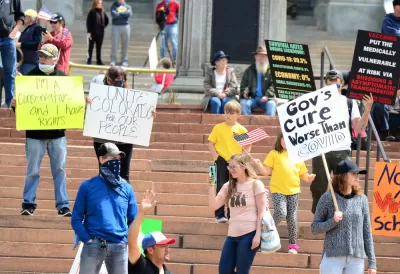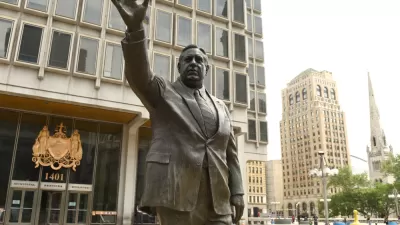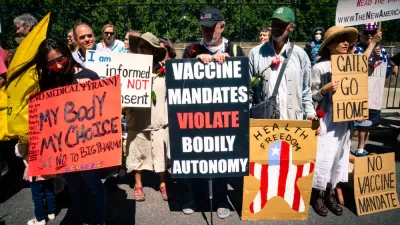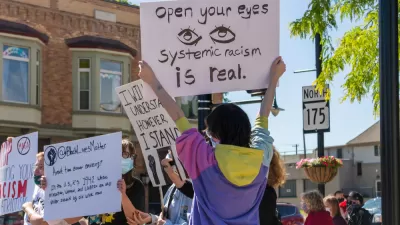Covid-19 deaths track closely to the discriminatory boundaries set by housing lenders, sponsored by the government, in the 20th century.

Jeremy Németh and Sarah Rowan, both from the University of Colorado Denver, connects the dots between the discriminatory housing practices of the 20th century and the public health risks of the 21st century.
After explaining some of the well documented connections between place and public health, Németh and Rowan focus on the public health risks, including Covid-19 fatalities, in Valverde, a neighborhood on the West Side of Denver redlined by the Home Owner’s Loan Corporation in the 1930s.
Mapping scores on the CDC’s Social Vulnerability Index in Denver reveals how these clear patterns of disadvantage [created by the legacy of redlining] coincide with COVID-19 hospitalization rates," according to the article.
The article also shifts focus to solutions, with Denver as the continuing model, and recommendations for additional measures in cities all over the country.
In the short term, critical efforts can include widespread free testing events in vulnerable neighborhoods, along with distribution of free hand sanitizer, cleaning supplies and masks, which also helps ensure that at-risk residents do not have to travel on crowded public transportation to shop for these items. This is also an opportunity to link uninsured residents to health care coverage and primary care providers.
Other measures, like the location of community health centers in at-risk neighborhoods, are also discussed.

Rethinking Redlining
For decades we have blamed 100-year-old maps for the patterns of spatial racial inequity that persist in American cities today. An esteemed researcher says: we’ve got it all wrong.

Montreal Mall to Become 6,000 Housing Units
Place Versailles will be transformed into a mixed-use complex over the next 25 years.

Planetizen Federal Action Tracker
A weekly monitor of how Trump’s orders and actions are impacting planners and planning in America.

Seattle Safe Parking Site to Close, Relocate
A nonprofit leases lots during permitting stages to erect tiny homes and RV safe parking sites for unhoused residents. But the model means constant uncertainty and displacement.

LA ‘Mobility Wallet’ Increased Quality of Life for Participants
The city distributed a monthly $150 transportation subsidy to 1,000 low-income Angelenos. It dramatically improved their lives.

Texas, California Rail Projects Seek Out Private Funding
In the wake of Trump’s cuts to high-speed rail projects, rail authorities are looking to private-public partnerships to supplement their budgets.
Urban Design for Planners 1: Software Tools
This six-course series explores essential urban design concepts using open source software and equips planners with the tools they need to participate fully in the urban design process.
Planning for Universal Design
Learn the tools for implementing Universal Design in planning regulations.
City of Camden Redevelopment Agency
City of Astoria
Transportation Research & Education Center (TREC) at Portland State University
Regional Transportation Commission of Southern Nevada
Toledo-Lucas County Plan Commissions





























